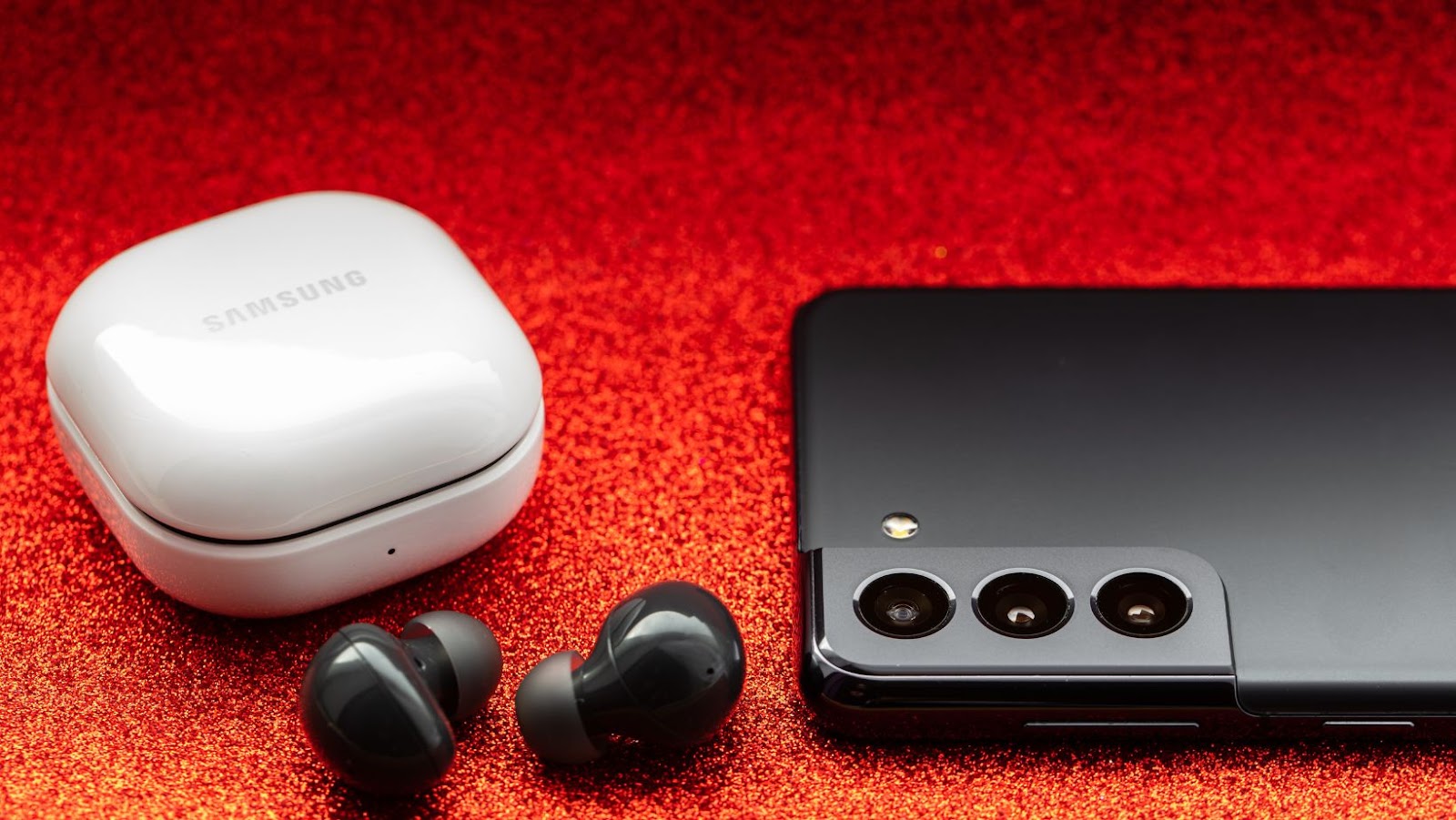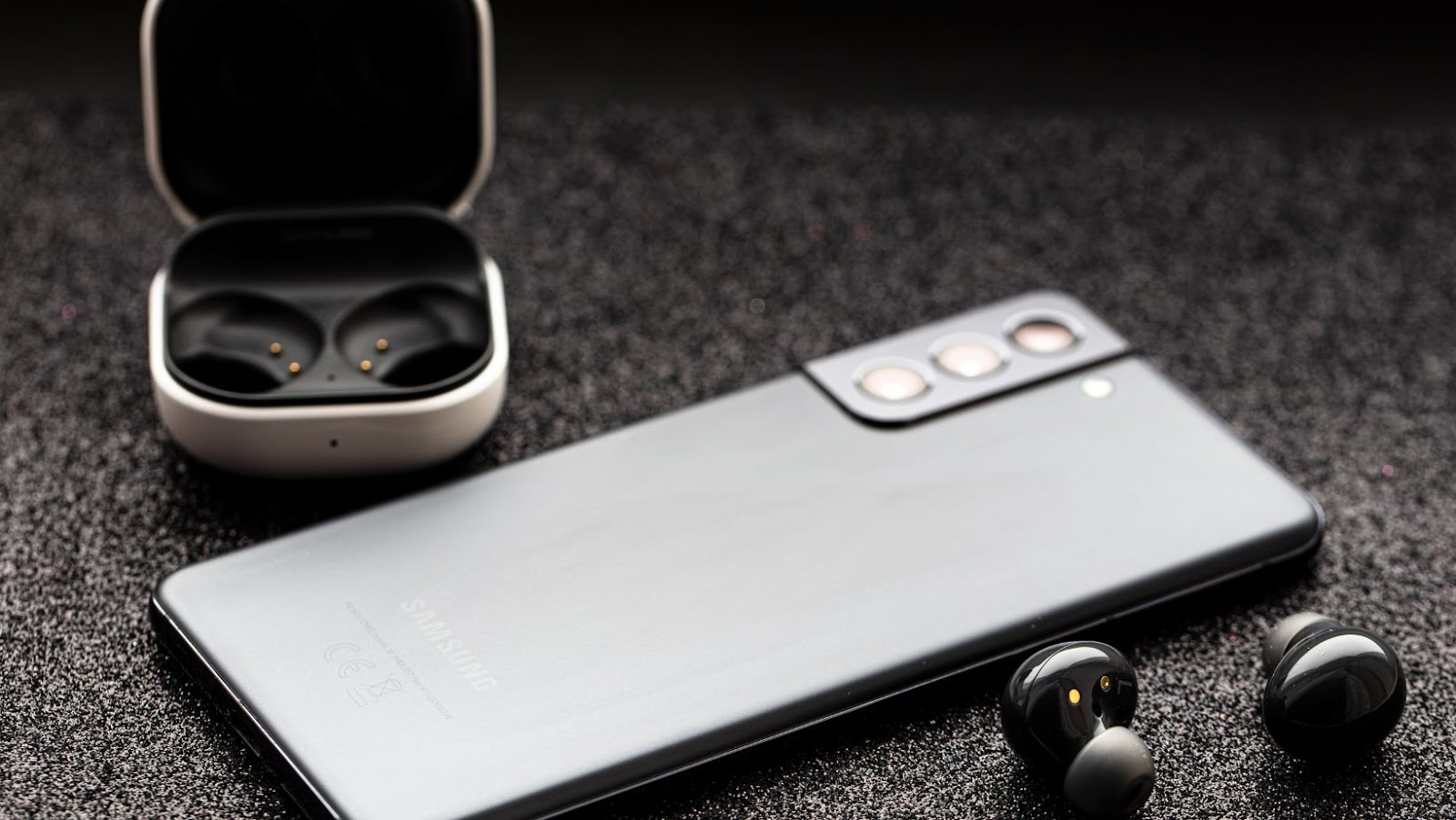Samsung, the world’s largest maker of smartphones and consumer electronics, reported a strong quarter ending September 30th, 2020. The firm experienced an estimated surge of 50.3% in quarterly revenue and an even larger assumed 114.1% increased operating profits compared with Q3 2019 results.
The South Korean tech titan’s success points to several factors, including a focus on meeting consumer demand for higher value devices and services, an approach to delivering 5G capable technology at the right time and price point, as well as strategic investments in artificial intelligence (AI), machine learning (ML) and Internet of Things (IoT).
This article explains Samsung’s third-quarter performance by taking a comprehensive look at some key drivers that have propelled the firm’s operational achievements during this period. We will cover:
- The latest smartphone offerings from Samsung;
- R&D investments related to AI;
- Strategic partnerships with 5G carriers;
- Expansion of consumer-oriented services like cloud gaming;
- Public relations initiatives designed to bolster brand awareness internationally.
Samsung Home Electronics Announces 3rd Quarter Results
Samsung recently announced their 3rd quarter results in home electronics and it is clear that their performance has been quite strong. The global tech giant has seen an increase in its sales and profits, and this success is attributed to their focus on innovation as well as strong marketing campaigns.
In this article, we will look at Samsung’s 3rd quarter results in home electronics and discuss what drove their success.
Revenue and Operating Profit
Samsung Electronics reported solid third-quarter results with strong revenue and operating profit growth. Total revenue increased 13.1% year-over-year to 68.8 trillion Korean won ($61 billion). Operating profit doubled to 11.2 trillion won ($9.9 billion). The company’s mobile division contributed the largest revenue and operating profit growth. Other divisions also strengthened as demand for consumer electronics such as TVs and refrigerators remained robust.
The company’s mobile division reported 25% year-over-year revenue growth to 32 trillion won ($28 billion) due to strong sales of flagship devices like the Galaxy S20 and Galaxy Note 20 series. Demand for smartphones in North America and Europe was particularly strong, with double-digit unit shipment gains for the quarter in these regions compared with last year’s quarter. In addition, the mobile division posted 7 trillion won ($6 billion) in operating profit which represented a significant increase from 2.6 trillion won a year earlier due to improving product margins on shipments of higher priced products like foldable display phones such as the Galaxy Z Flip 5G.

The semiconductor division reported 21% higher revenue at 17.2 trillion won ($15 billion), driven by increasing demand for servers, PCs, and 5G network equipment used in data centres worldwide. The semiconductor business also reported improved margins due to stronger pricing power resulting from tight supply conditions across the global industry, leading to 4 trillion won ($3 billion) in operating profit compared with 1 trillion a year earlier.
Home Electronics Performance
Despite the economic impact of the COVID-19 pandemic, Samsung reported strong financial results for its third quarter ending September 30th. The South Korean corporation posted a 3% year-over-year increase in revenues, and operating profit rose 1%. The successful results can be largely attributed to Samsung’s home electronics performance, which saw sales of televisions, air conditioners and other home appliances grow significantly.
Samsung’s home electronics business accounted for nearly one-third of its revenue in the third quarter. Smartphone and tablet sales increased 8%, television sales rose 12%, and home appliance demand grew 14%. The company noted a high demand for premium products such as Ultra High Definition (UDH) TVs and air conditioners. This also drove higher average prices across all categories of home electronics products.
The strong performance of Samsung’s Home Electronics Division highlights that despite the impact on businesses globally due to the pandemic, South Korea’s biggest tech firm turned a modest profit by tapping into consumer spending during the coronavirus outbreak.
Factors Behind Samsung’s Strong Performance
Samsung’s third quarter results showed a strong performance driven by its success in home electronics. The company reported record sales of its home electronics products, including televisions, home appliances, and smartphones. Samsung’s performance in its third quarter was propelled by several factors, which we will explore in this article.
Demand for Home Electronics
Demand for home electronics was one of the key drivers behind Samsung Electronics’ strong performance over the third quarter. Sales of home appliances increased 17.6% year-on-year, while those for televisions grew by 17%. This demand for home electronics was seen across all markets, with sales in developed countries such as Europe and North America increasing by 25.7% and 16%, respectively.
In addition to this increase in demand, Samsung has also benefited from having a wide range of products available on the market. For example, their new ‘Smart Family’ series offers an integrated ecosystem of connected products that can work together to create an intelligent living space – such as being voice activated through Bixby technology and synchronised with other smart devices around the house. Therefore, appealing to a mass audience looking for convenience and innovation in their homes has allowed Samsung to continue expanding its market share; see reports show that they are currently ranked first in global television sales with a market share of 28.5%.

Furthermore, their entry into the 8K market at the back end of 2019 presented them with yet another opportunity to capitalise on increased consumer demand during this period – selling over 1 million 8K units so far and improving their position within this burgeoning sector significantly. Subsequently, Samsung’s comprehensive product portfolio coupled with an ever increasing range of applications has enabled them to maintain strong growth figures throughout 2020 despite many businesses struggling globally due to lockdowns.
Expansion of 5G Network
The expansion of 5G, the fifth generation of wireless networking standards, has played a key role in Samsung’s recent strong performance. 5G network deployments enable devices to access faster download and upload speeds and improve wireless coverage. 4G networks are expected to reach peak saturation by 2021 while 5G will remain in its infancy in 2020. Global 5G investments will be estimated to exceed $3 Trillion by 2028. Samsung is making the necessary moves to take advantage of the early mover and technological advantages associated with this rising trend.
As such, Samsung announced a joint venture with Ericsson in April 2019 to develop technology for next-generation 5G network infrastructure. Additionally, the company recently announced its “Smart Solutions” offering that combines its hardware and software capabilities for a more secure platform for data centres and companies looking to expand their presence in the 5G era.
In addition to developing its products like smartphones that are compatible with 5G networks (e.gGalaxy S20 Ultra), Samsung also announced plans to launch an end-to end artificial intelligence (AI) product with Qualcomm’s Snapdragon platform which would enable device makers to run AI applications faster on connected products using smaller chipsets pushed by mobile carrier networks supported by 5G networks. Specifically, these products are expected to help accelerate the deployment and optimization of real-time AI applications across connected devices while improving energy efficiency and managing data growth caused by increased use of broadband services.
By entering this new digital phase built around emerging technologies like 5G and AI, Samsung has positioned itself ideally to meet demand from consumers, businesses and government entities looking for answers under this new paradigm shift towards a mobile-first world economy.
Strategic Partnerships
Samsung continues to formulate and execute a strategy of forging key partnerships that have led to innovative products being introduced in the market. For example, through collaborating with various partners from its System LSI division and its memory business, Samsung has solidified relationships with top industry players such as Intel, NVIDIA, AMD, Microsoft, Google and car makers like Audi, BMW and Volvo.
These collaborations allow Samsung to develop leading-edge technologies quickly by leveraging partner capabilities. These include 5G Modem solutions that offer faster data speeds across multiple carriers; AI based voice technologies; image processors for high-resolution camera images; Quantum dot technology for improved colour accuracy in televisions; automotive grade chipsets with advanced safety features; state-of-the art memory applications targeting higher density server architectures; and custom 5G systems on chip with tightly integrated communication protocols.

Furthermore, Samsung is presently engaged in an accelerated research & development program involving 8K resolution video technology related to quantum dot displays (QLED), a next generation ultrahigh definition display technology that offers more realistic pictures for current HD content and 4K video sources. The company’s proficiency in VLSI (very large scale integration) design have enabled it to deliver these two cutting edge chipsets within shorter time frames than expected by the market. This latest launch of products is yet another example of how strategic partnerships can assist a company in achieving better results through accelerated product development times.
Conclusion
In conclusion, Samsung achieved impressive performance during the third quarter of 2020. The company’s stronger-than-expected earnings and sales figures were primarily driven by solid growth in its semiconductor and display businesses, underpinned by surging global demand for 5G components and phones. Additionally, Samsung benefited from its broad portfolio of consumer electronics products such as TVs, refrigerators, washing machines, air conditioners and smartphones which boosted the brand’s top line during the quarter.


More Stories
A Look at the Current iGaming Sector in the UK
Personalized Professionalism: Engraved Name Tags for Every Occasion
Boost Your Website with Engaging H2H Slot Games: A SEO Strategy Guide